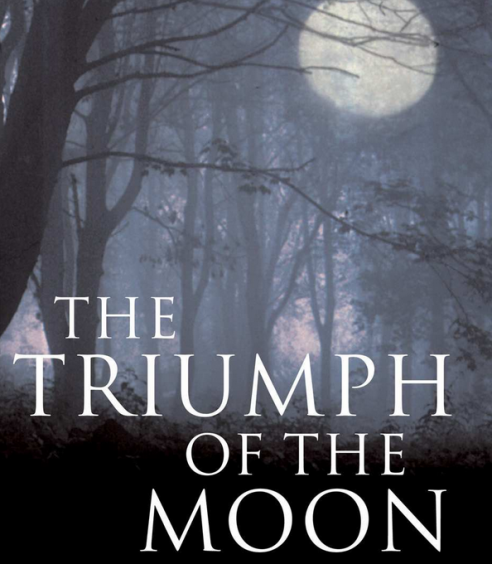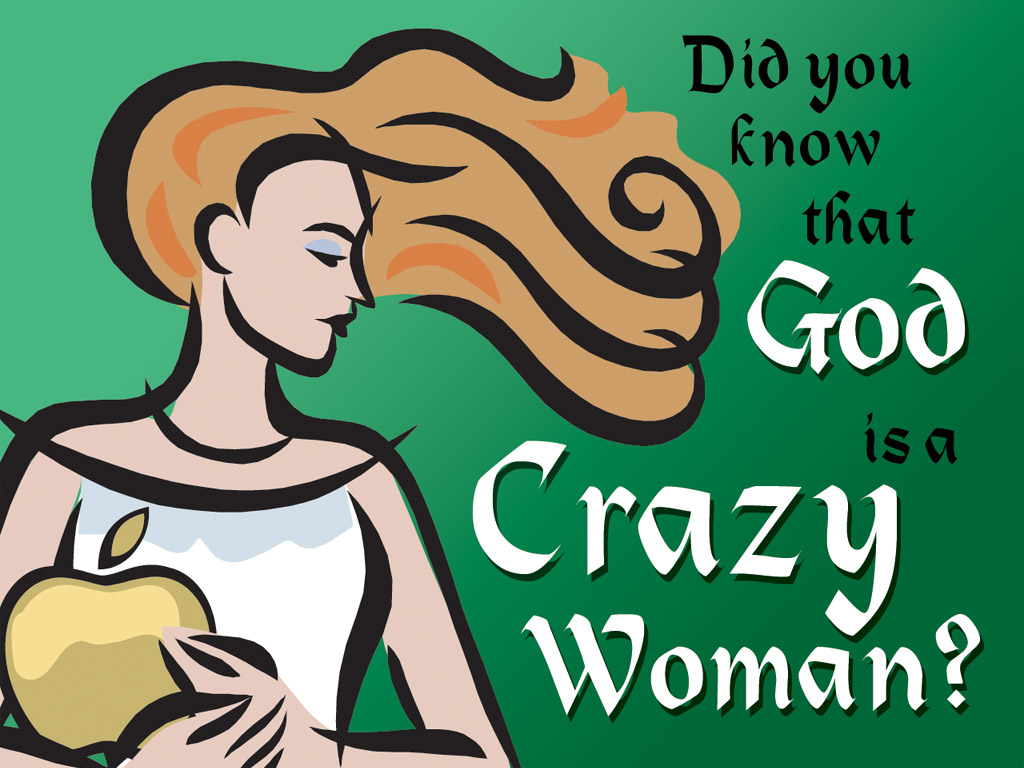We don’t know—and we have no way to find out.

In the 1980s, I practiced Wicca. Wicca is the original, pre-Christian, goddess-centered nature religion of Europe. Despite centuries of persecution and the burning of millions of Wiccans as “witches,” it survived underground to modern times. When the British Witchcraft Act was finally repealed in 1951,1 courageous Wiccans began, cautiously, to practice their religion in public.
Well… that’s all hogwash, of course. It was obvious to skeptical Wiccans in the 1980s that our religion was an invented tradition, devised sometime in the twentieth century. It has only the vaguest of connections with pre-Christian European paganism. What we didn’t know, and had no way to find out, is whodunnit, and how, where, why, or quite when. Wicca’s inventors justified the religion as “ancient wisdom,” and they covered their tracks thoroughly. Their fabricated history was accepted uncritically by the vast majority of Wiccans. The inventors of other Neopaganisms adapted the Wiccan “unbroken secret tradition” mythology to their own systems. But as far as we skeptics were concerned, Wicca was a wonderful religion, regardless of where it came from.
The Triumph of the Moon: A History of Modern Pagan Witchcraft, published in 1999, was a breakthrough. Ronald Hutton, a serious non-Pagan historian, made key discoveries about Wicca’s twentieth century invention, and found suggestive evidence for broader hypotheses. His treatment was sympathetic and respectful—but facts are facts.
Not surprisingly, Hutton’s work was vitriolically rejected by many practicing Neopagans. Somehow, ancientness is proof of rightness for many people. I seem to lack the brain circuits for this. I can see no reason a 75-year-old religion is, on that account, any less valid than a millennia-old one. (Was Buddhism bogus when the Buddha taught it?) On the other hand, understanding how a religion was invented, and successively re-invented, helps understand how it functions now. Some aspects of Wicca that made sense in the 1940s make no sense now.
Despite Hutton’s discoveries, and further historical research, there is much that is still not known about how Wicca came about. Some key questions probably can never be answered.

Discordianism is a newer Neopagan religion, which worships Eris, the Goddess of Chaos. I first learned about Discordianism from the novel Illuminatus!. (I discussed that in “Illuminatus, Voegelin, and the politics of SBNR monism.”) Like most readers, I assumed that the religion, and its central scripture, the Principia Discordia, were fictional—like the Cthulhu worshippers and Necronomicon of H.P. Lovecraft. I was wrong.
The Principia Discordia, first published around 1965,2 is an exploration of the play of nebulosity and pattern—the actual topic of everything I write. It is one of the oddest books ever written, and one of those that have most influenced me.
The Principia Discordia claims to have been divinely revealed by the goddess Eris to “Malaclypse The Younger,” who is a character in Illuminatus!. Robert Anton Wilson, the author of Illuminatus!, insisted that he was not Malaclypse, and told some mainly preposterous stories about how the Principia came to be.3 However, until last year, it seemed that the early history of Discordianism would forever remain largely fictional. We didn’t know where it came from—and we had no way to find out.
By chance, Malaclypse The Younger kept an obsessively complete archive, which was narrowly saved from destruction when he died in 2000. It was eventually passed to Adam Gorightly, a non-academic independent historian, who published excerpts as Historia Discordia in 2014.
Despite many revelations from the Malaclypse archive, the questions about Discordian origins I would most like answered remain largely obscure. I am sympathetic to visionary history; I think terma scriptures’ claims to divine inspiration are true in some sense. From the Principia:
[Interviewer]: Is Eris true?
[Malaclypse]: Everything is true.
Even false things?
Even false things are true.
How can that be?
I don’t know man, I didn’t do it.
Without rejecting the divine intervention of Eris (whose unquestionable nonexistence does not negate her inspiration), I would like to know where the Principia’s ideas came from. There was some influence from Zen (whose Zen? how?) and from Korzybski’s Science and Sanity: An Introduction to Non-Aristotelian Systems and General Semantics (whose importance in mid-20th-century intellectual history baffles me). These explain little of the Principia’s content, though.
Was there any influence of Wicca on Discordianism? No sign of that. Yet they share several themes: goddess worship, among others. What was their shared origin? (Buddhism influenced both, but makes much less use of goddesses than I would like.) Or did the two systems somehow independently discover somewhat similar solutions to mid-twentieth-century spiritual problems, despite the very different cultures they arose in?
In a recent blog post, Gorightly discusses his discovery of what may be the earliest version of the Discordian scriptures, in the archives of the House Select Committee on Assassinations, created by the United States Congress to investigate the murder of JFK. It ended up there for unimaginably eldritch reasons, with esoteric details still unknown. It is historically certain that Lord Omar Khayyam Ravenhurst, who co-founded Discordianism with Malaclypse, was subpoenaed and charged as a possible JFK co-conspirator.4 Some texts of the Principia claim that it was first printed on the Xerox machine of Jim Garrison (played by Kevin Costner in Oliver Stone’s JFK), the New Orleans district attorney who investigated the (probably-nonexistent) conspiracy. Improbable as it sounds, this may actually be true.
Gorightly’s post applies methods of historical textual criticism to try to determine the relationship between the version in the Congressional archive and the earliest version in Malaclypse’s personal archive. As is typical of text-based scriptural analysis, the goal is to try to determine which is the earlier version. His tentative conclusion is that Assassination Committee’s version has historical priority (and that it was, indeed, printed in Garrison’s office). Apparently both are quite different from the earliest version that had previously been known—which is the typical finding of scriptural scholarship in all religions.
Is it time to get to my point?
The point is that Neopaganism is a major contemporary religion, invented in living memory, yet key questions about its pre-1951 history remain in doubt, and what “the original version” was like is an open question. Some questions can probably never be answered, because the inventors destroyed evidence in order to perpetrate the “ancient tradition” myth.
The point is that Discordianism was invented in my lifetime, by people who made only token efforts to hide its history; yet the extensive archive of the primary inventor leaves most important questions unanswered, and probably unanswerable. We have only a vague idea of what Discordian practice in the early 1960s was like. Reading the Principia Discordia gives almost no insight. Gorightly has collected oral accounts from people who were involved and are still alive, but they are conflicting and vague.
The point is that we have no clue what early Buddhism was like. There are no historical records apart from the scriptures. We know that most of those were written much later, and expound doctrines and practices quite different from those of early Buddhism. Historians do not agree on which scriptures, if any, reflect the Buddha’s teaching. There’s no well-founded method for figuring that out.
We are never going to know. We are not going to find the Buddha’s personal archive in a cave on Vulture Peak Mountain. If we did, it would be fascinating, but it wouldn’t answer the most important questions, any more than Malaclypse’s archive does.
Contemporary Buddhist teachers, including some who position themselves as skeptics, are still teaching that what the Buddha really said was so-and-so; and because he really said it, that is The Right Way To Do Buddhism. But much of it, they just made up themselves; and nearly all the rest comes from the late 1800s and the past century.
In fact, the actual sources of modern Buddhism, and its actual history, are fascinatingly parallel to the actual sources and history of Wicca. Both were created from a dynamic mixture of Romanticism, Enlightenment rationalism, and Christianity. Both address the spiritual problems of modernity. None of this is now in factual doubt.
So WTF, dudes? Why are you still putting your words in the Buddha’s mouth? Why do you think you have to pretend? Aren’t you confident that your Buddhism is good enough, judged by its own merits, without lying about its origins?
- See Wikipedia. The last witchcraft conviction in Britain was in 1944. The 1735 Witchcraft Act is still in force in Israel and South Africa, whose legal systems were inherited from Britain. ↩
- Various sources give the first date of publication as 1963, 1964, and 1965. The book explicitly rejects copyright and has no ISBN number, and later editions claim only five copies were printed of the first, so it’s nearly as difficult to date as the scriptures of any other religion. ↩
- Wilson’s claims, although preposterous, were largely true. Some details seem to have been wrong, but that was likely inadvertent. ↩
